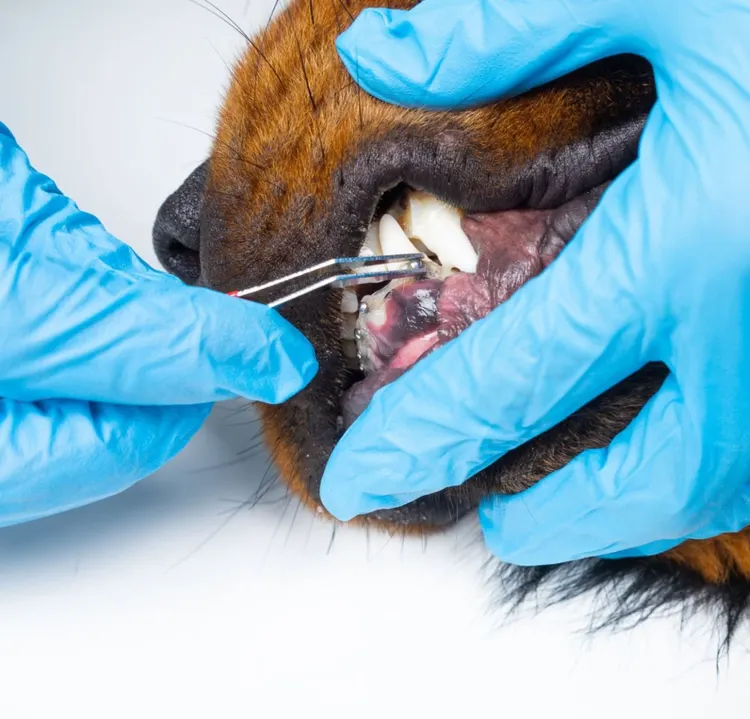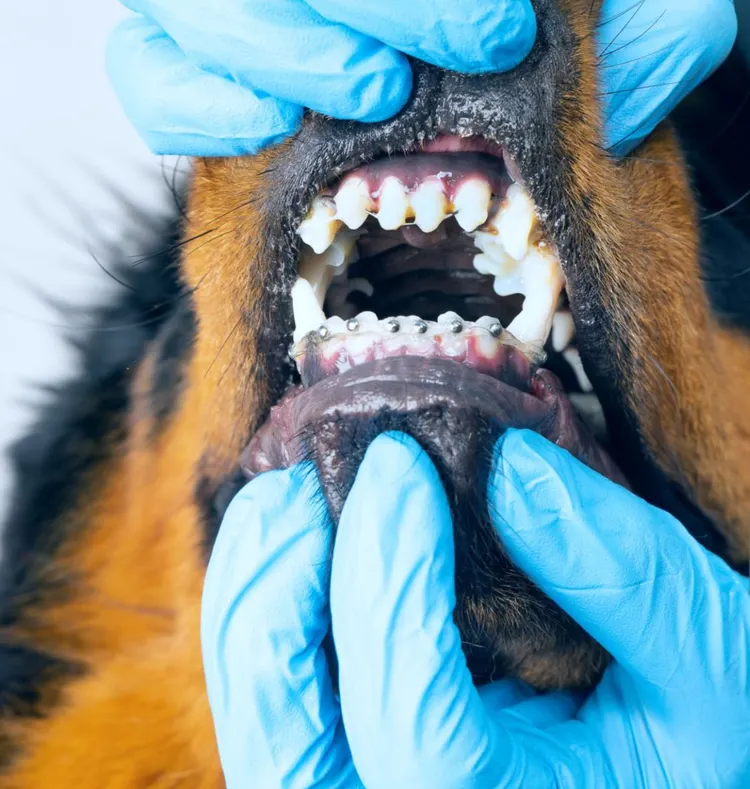When you hear the word “braces,” you probably think of teenagers with awkward smiles and metal brackets. But guess what? Braces aren’t just for humans anymore! In fact, dogs can need braces too. Whether it’s for correcting misaligned teeth, treating jaw issues, or aiding in mobility, braces for dogs have become an effective solution to ensure our furry friends live healthier and more comfortable lives. But before you start imagining your dog with a metal-filled grin, let’s explore the ins and outs of braces for dogs, and why they might be a game-changer for your pet’s health.
Why Would a Dog Need Braces?
Dogs, like humans, can experience a variety of dental and orthopedic issues that might require braces. These issues can include:
1. Malocclusion (Bad Bite)
Malocclusion happens when a dog’s teeth don’t line up properly, causing discomfort, difficulty eating, or even damage to the gums and other teeth. Braces can help correct the alignment of the teeth, making it easier for your dog to chew and preventing long-term dental damage.
Types of Malocclusion:
- Overbite: When the upper teeth extend beyond the lower teeth.
- Underbite: When the lower teeth extend past the upper teeth.
- Crossbite: When some of the upper teeth sit inside the lower teeth instead of outside.
2. Teeth That Haven’t Erupted Properly
Sometimes a dog’s baby teeth don’t fall out as they should, causing the adult teeth to grow in at odd angles or positions. This is not only painful but can lead to dental infections. Braces help guide teeth into their correct positions and avoid further complications.
3. Jaw Alignment Problems
Certain breeds are prone to jaw alignment issues, which can cause discomfort, difficulty in closing the mouth, or even breathing problems. In these cases, braces can help reposition the jaw, improving both function and quality of life.
4. Mobility Issues
Apart from dental braces, orthopedic braces are used to support dogs with joint or limb issues. Whether due to an injury, surgery recovery, or conditions like arthritis, these braces help stabilize the affected area and reduce pain, allowing the dog to move more freely.

How Do Braces Work for Dogs?
While it might sound strange, the principles of dog braces aren’t too different from those used for humans. In dental cases, a veterinarian or veterinary orthodontist will apply custom braces, usually using metal or ceramic brackets that gently move the teeth into place over time.
The Process:
- Consultation: You’ll begin with a consultation with a veterinarian, who will assess whether your dog is a good candidate for braces. This usually includes X-rays and a thorough dental exam.
- Fitting: If braces are needed, the vet will custom-fit them to your dog’s teeth. This might involve some anesthesia to keep your dog comfortable during the process.
- Regular Check-ups: Just like with human orthodontics, regular visits will be required to adjust the braces and ensure progress is being made.
- Duration: The total time your dog will need braces depends on the severity of the issue, but it typically ranges from a few months to a year.
Orthopedic Braces:
Orthopedic braces, on the other hand, are used for limb support. These braces are usually made from lightweight materials like plastic or neoprene and can be used for a variety of issues, including knee injuries (ACL tears), arthritis, and hip dysplasia. Orthopedic braces help stabilize joints and reduce pain while allowing the dog to continue walking and playing.
The Benefits of Dog Braces
Now, you might be wondering, “Why go through the hassle of getting my dog braces?” Here are some key benefits:
- Improved Comfort and Quality of Life: Braces can eliminate pain and discomfort caused by misaligned teeth or joint problems, allowing your dog to enjoy activities like eating, chewing, and playing without any issues.
- Preventing Long-Term Damage: Without treatment, dental issues can lead to more serious problems, such as infections, gum disease, or even tooth loss. Orthopedic problems can worsen over time, potentially requiring more invasive surgeries down the line. Braces help prevent these complications.
- Aesthetic and Functional Correction: While your dog might not care about their “smile,” correcting their teeth or joints can lead to better overall functionality. For example, your dog will be able to chew food properly or move with ease if mobility is an issue.

Eco-Friendly Approaches to Canine Braces
You might be wondering if there’s a way to be eco-conscious while managing your dog’s orthodontic or orthopedic care. Thankfully, there are several ways to approach this:
- Reusable Materials: Many orthopedic braces are now being made with sustainable, eco-friendly materials like recycled plastics or plant-based neoprene alternatives. By choosing these options, you’re helping to reduce waste and your environmental footprint.
- Conscious Consumption: Instead of opting for single-use bandages or disposable products, look for reusable braces or supports. These can be washed and used multiple times, making them a more sustainable option.
- Natural Pain Relief: If your dog needs braces for orthopedic reasons, you might also consider natural supplements like glucosamine derived from sustainable sources, fish oils, or hemp-based products that support joint health.
- Energy-Efficient Vet Offices: When choosing a vet or specialist, try to opt for clinics that prioritize sustainability, from their building design to their medical equipment and waste management practices. Many veterinary offices are now implementing energy-efficient technologies and green building practices to reduce their environmental impact.
Drawbacks of Dog Braces
While braces can work wonders for dogs in need, they aren’t without their challenges:
- Cost: Orthodontic and orthopedic braces for dogs can be expensive. For dental braces, the cost can range from $1,500 to $5,000, depending on the severity of the issue. Orthopedic braces can range from $500 to $2,000, depending on customization and need. While costly, it’s important to weigh the long-term health benefits.
- Maintenance: Keeping your dog’s braces clean and properly adjusted requires time and attention. For dental braces, regular brushing and vet visits are a must. For orthopedic braces, you’ll need to monitor your dog’s comfort and make sure the braces don’t cause any chafing or skin irritation.
- Discomfort: Just like in humans, braces can cause discomfort for dogs, especially in the early days of adjustment. While they’ll get used to it over time, it’s essential to ensure your dog feels comfortable and isn’t in pain.
When to Consider Braces for Your Dog
If your dog is showing signs of dental discomfort—such as trouble chewing, excessive drooling, or swollen gums—it might be time to ask your vet about braces. Similarly, if your dog is limping or showing signs of joint pain, especially after an injury or surgery, orthopedic braces can provide much-needed relief and support.
Conclusion
Braces for dogs may seem unusual at first, but they’re an effective tool for improving your pet’s quality of life. Whether your dog needs dental braces for a bad bite or orthopedic braces to support mobility, modern veterinary care offers a range of options to suit your dog’s needs.
Remember, braces aren’t just for aesthetics—they’re a practical, health-focused solution that can prevent more serious complications down the road. And with eco-friendly materials and sustainable care options, you can rest easy knowing that you’re making good choices for both your pet and the planet.



